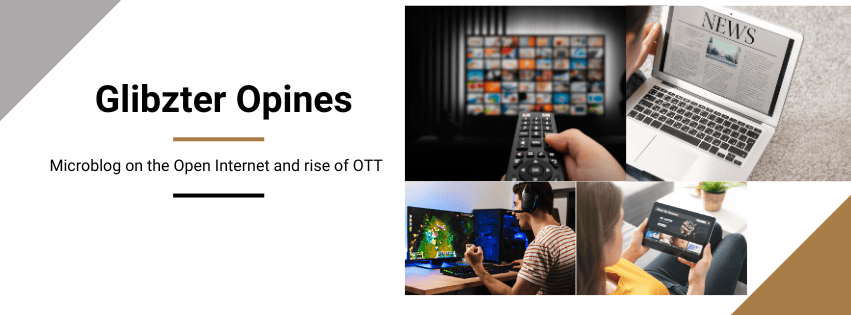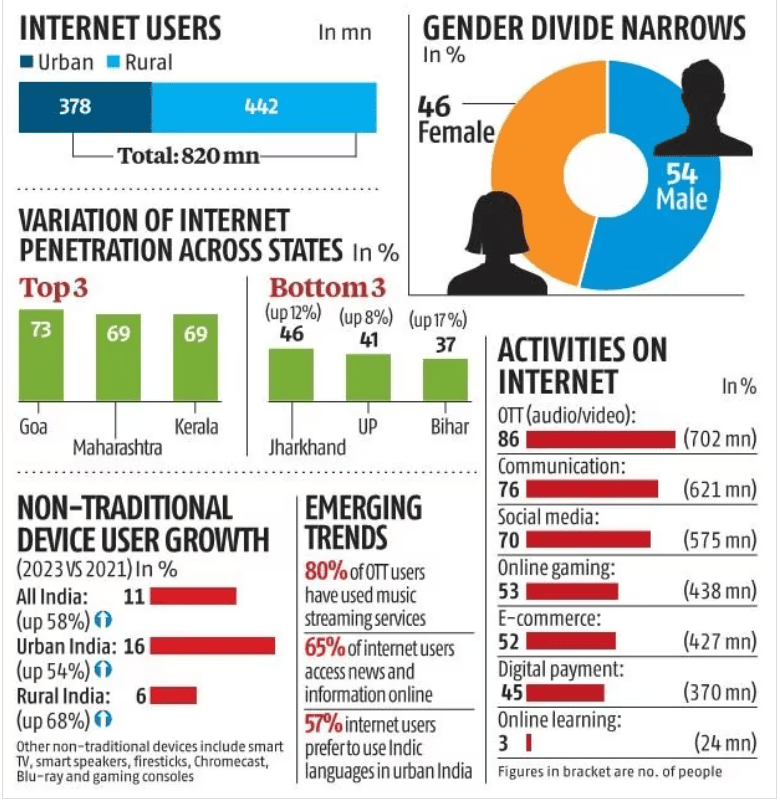Glibzter Opines are microblogs within GlibTalks, where members of the Glibzter Team share their thoughts and opinions on trending topics of relevance. This one is an observation on the rise of the Open Internet and OTT consumption in India and how the rising usage could present itself as an opportunity for language learning.

For the uninitiated, the term 'Open Internet' refers to over-the-top (OTT) and connected TV (CTV), music streaming, online gaming, and news websites with no 'walled gardens' - a term used to define an internet environment with restricted access to websites. 8 out of 10 users in India are increasing their time on the open internet in 2024, as per a research report released by global advertising agency - The Trade Desk.
The Open Internet surpasses social media in terms of engagement. The same agency had released a report in 2023 stating that consumers are spending 52% of the average 307 hours in a month browsing the Open Internet with 48% spent on social media, user generated content and online live streaming platforms.
Even in terms of engagement, the Open Internet comprising OTT video and music streaming, Connected TV and news websites enjoy a better engagement rate (34%) as against social media (30%). Younger Indians are 27% more likely to choose OTT/Connected TV over social media for their content consumption.
The usage habits are very different. Users of the Open Internet actively seek information while those on social media passively consume auto-generated content feeds. This is a very useful consumer insight to have.
Internet usage in India
Internet users currently number 820 million in India. What is interesting to observe in the chart below are the activities they perform on the internet.

- On the topmost rung is OTT (audio/ video) consumption with 86% (702 million) internet users in India using streaming services.
- OTT consumption via smart devices (Connected TV - Smart TV, Chromecast, Amazon Firestick etc.) has increased by 58% from 2021 to 2023. 208 million Indians consume video content on such devices overtaking the 181 million conventional TV consumers.
- 65% (533 million) internet users in India access online news.
- While majority of internet users (even in urban India) - 57% prefer to consume content in Indic language, it can be conversely inferred that 43% would prefer content consumption in English.
- Online learning is accessed by only 3% (24 million) of India's internet users.
Glibzter's Take
Being an EdTech meets Consumer Tech venture, it is the lowly 3% (24 million) internet user number in the online learning space that catches our attention. Having launched Glibzter Immersive - English Vocabulary Builder, a web browser extension and web app for building and expanding English vocabulary while streaming online videos with English subtitles/ closed-captions and reading online news articles, there is the potential of converting a significant chunk of 533 million internet users who consume online news content and 702 million users of OTT video streaming services to become online language learners, starting with English and later using the same technology application for Indian regional languages and foreign languages.
Read:How Glibzter Immersive helps you build and expand your English Vocabulary
With videos on YouTube and Netflix (the OTT Platforms Glibzter Immersive is programmed to work on) having English subtitles / closed-captions, they serve as an immersive mode for language learning. The trend we are looking at is the implementation of Same Language Subtitling (SLS) for entertainment/ infotainment content on these platforms particularly for Indian regional language learning (e.g. Watching a Rajanikanth movie in Tamil or a Junior NTR movie in Telugu to learn new words and phrases in that language) which we see as a potential business opportunity to explore in the future.
Read:Same Language Subtitling - A boon for language learning via videos
This can also be applicable to reading regional language content via online news portals for users keen on learning them in the future. Currently, users can still watch Indian regional language video content with English subtitles/ closed-captions to build and expand their English Vocabulary.
Lastly, the trend of increased usage of connected devices indicates the need for Glibzter Immersive to be made adaptive for usage on mobile and such devices, beyond laptops/ PC. While gamification is already prevalent in the space of EdTech with spaced repetition for language learning, integration of online gaming with language learning is a new dimension to explore.


